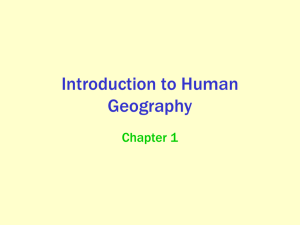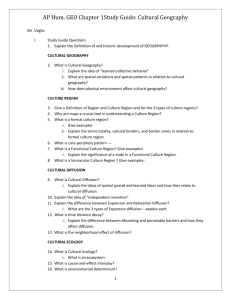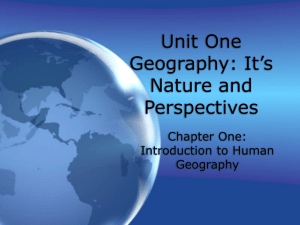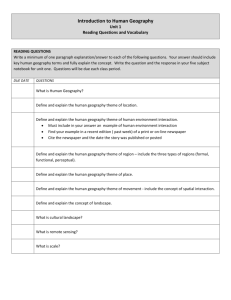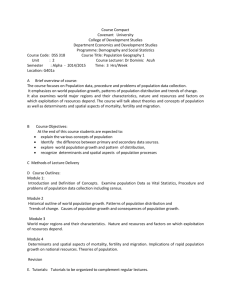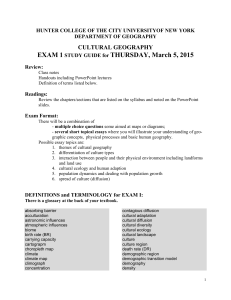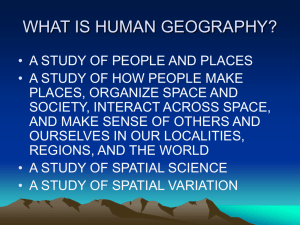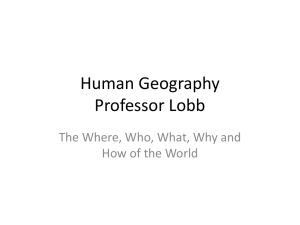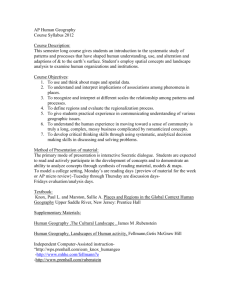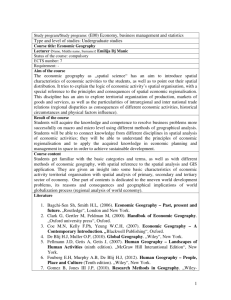Sense of place
advertisement
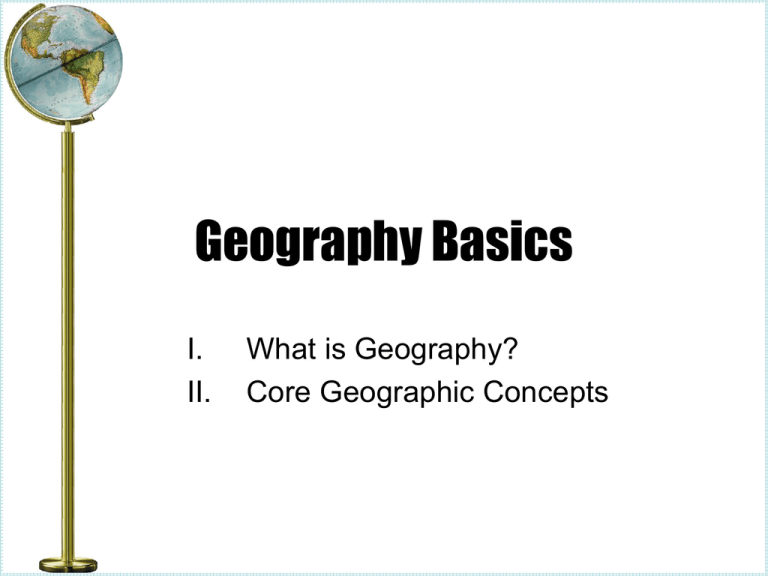
Geography Basics I. II. What is Geography? Core Geographic Concepts Geography • Geography: – The study of how and why things differ from place to place on earth. – The study of how observable spatial patterns evolved over time. – Began in Ancient Greece, focused on both physical and human characteristics of places. – Modern geography began in 17th century; was fully established by 19th century. Human Geography • Human Geography: – Focuses on people: where they are, what they are like, how they interact over space, and what kinds of imprints they leave on the natural landscape. – Draws from the other social sciences: economics, political science, sociology, history. – Helps us understand the world and appreciate the circumstances affecting people, both in our country and beyond. – Can help make us better informed citizens by enabling us to understand important issues facing people today. Important Geographic Concepts • Geography is mainly concerned with the concepts of space and place. – Space: territorial extent. • Absolute space: measurable extent with definable boundaries. • Relative space: perceptual, variable; reflects activities and interrelationships between them. – Place: the attributes and values we individually associate with a location. • Ex: hometown, neighborhood, high school. • Has size, location, physical structure and cultural content. • Develops and changes over time. Sense of Place • Sense of place: – The attachments we have to specific locations and their complex of attributes (our feelings toward them). – Individual and unique to each of us, though people may share similar regard for specific places. – Our sense of place shapes the lives and outlooks of people who inhabit them. – Reinforced by a place’s distinctiveness and diminished or lost by a place’s placelessness. Location, Distance • Location – where a place is – Absolute: identified by coordinates. – Relative: location in relation to a reference point. • Direction – Absolute – based on cardinal points – Relative (relational) – uses cardinal points from point of reference, ex. “Out West” or “Down South” • Distance – combines location/direction – Absolute – spatial separation between two points on earth, measured by an acceptable unit. Ex. “10 miles away” – Relative – changes absolute distance into a more meaningful unit. Ex. “15 minutes away” Landscape • Natural Landscape: – Physical characteristics of a place. – Examples: climate, resources. – Can play a major role in human activity: • Trade flows, population distribution, settlement patterns. • Cultural Landscape: – Visible evidence of human activity, i.e. characteristics created by man. The Natural & Cultural landscape are interconnected. We must understand both to study human activity. Discussion: How do places change over time? Interrelations between places • Spatial interaction: – We can study the way in which places interact with each other: • Friction of distance: a measure of slowing or restricting the effect of distance on spatial interaction. – The greater the distance, the greater the “friction” – Can be overcome through greater accessibility • Accessibility: How easy/difficult is it to overcome barriers for interaction, such as time, space, and the landscape? • Connectivity: All the ways, visible or not, in which places are connected: – Physical – Cultural – Technological Discussion: What role has globalization played in accessibility and/or connectivity? Spatial Diffusion • Ideas, people or items disperse (spread) from a center of origin (node) to more distant points in which it is connected. • The rate & extent of diffusion are affected by distance, technology, population density, means of communication, etc.

